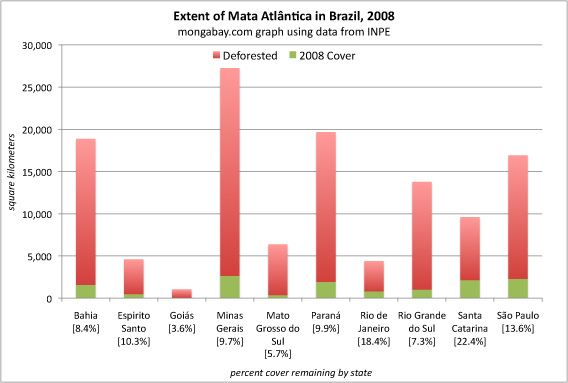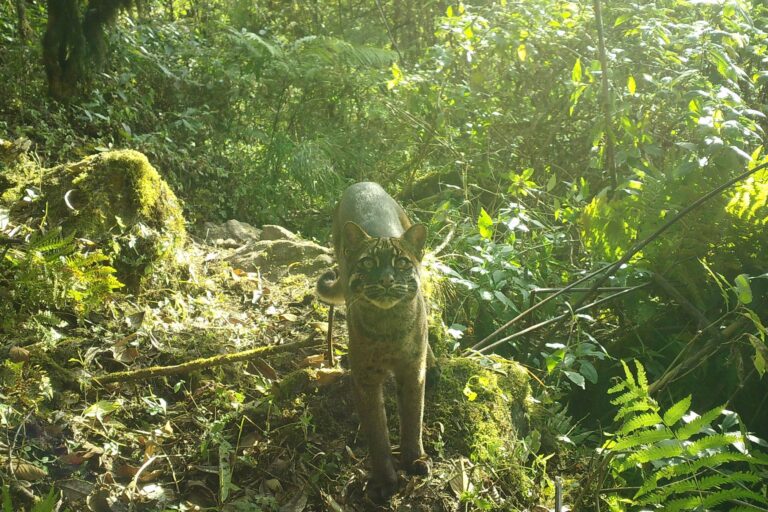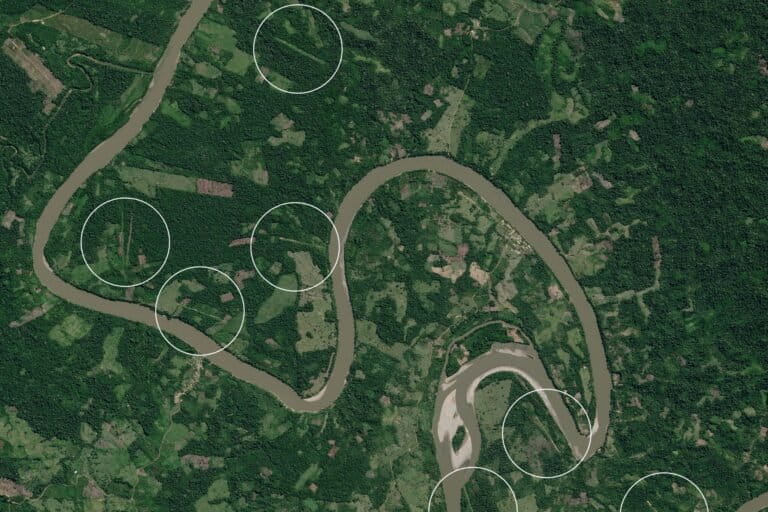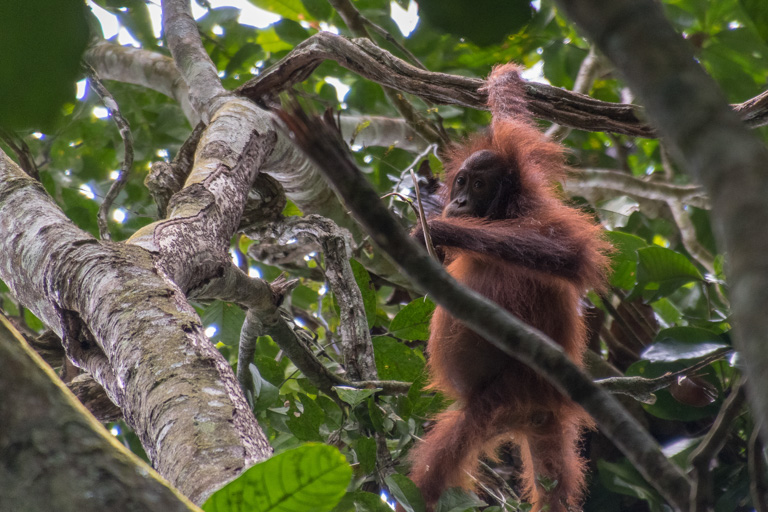More than 100,000 hectares of Brazil’s most threatened ecosystem was cleared between 2005 and 2008, reports a study by the Fundação SOS Mata Atlãntica and the National Institute for Space Research (INPE).
The “Atlas of Mata Atlântica Remnants”, released May 26, assessed the extent of the Mata Atlântica (Atlantic Forest) across 10 of the 17 states where the coastal rainforest occurs. It found that an 102,938 hectares were destroyed during the three year period. The annual loss of 34,121 hectares per year was 2.4 percent lower than the 34,965 ha recorded from the 2000-2005 period.
The study found that roughly one-third of the area cleared occurred in patches greater than 100 hectares. 76 percent of clearing events were smaller than 10 hectares.
 Click to enlarge |
The most extensive loss over the past three years occurred in the states of Minas Gerais (32,728 ha), Santa Catarina (25,953 ha) and Bahia (24,148 ha). Other states where Mata Atlântica was cleared included Paraná (9,978), Rio Grande do Sul (3,117 ha), São Paulo (2,455 ha), Mato Grosso do Sul (2,215 ha), Rio de Janeiro (1,039 ha), Goiás (733 ha) and Espirito Santo (573 ha).
The new study shows the Mata Atlântica now covers 102,012 square kilometers, or less than 8 percent of its original extent. Logging and conversion for agriculture and cattle ranches have been the primary drivers of deforestation of the Mata Atlântica, which is found in some of Brazil’s richest and most populous states.
In an effort to slow destruction of the Mata Atlântica, Brazilian president Luiz Inacio Lula da Silva last November signed a decree to protect and restore the ecosystem to 20 percent of its original cover. A separate program, initiated by the The Nature Conservancy (TNC) last year, aims to plant a billion native trees in the region.
The Mata Atlântica has been recognized by scientists as a global biodiversity hotspot for its wealth of plants and animals.














